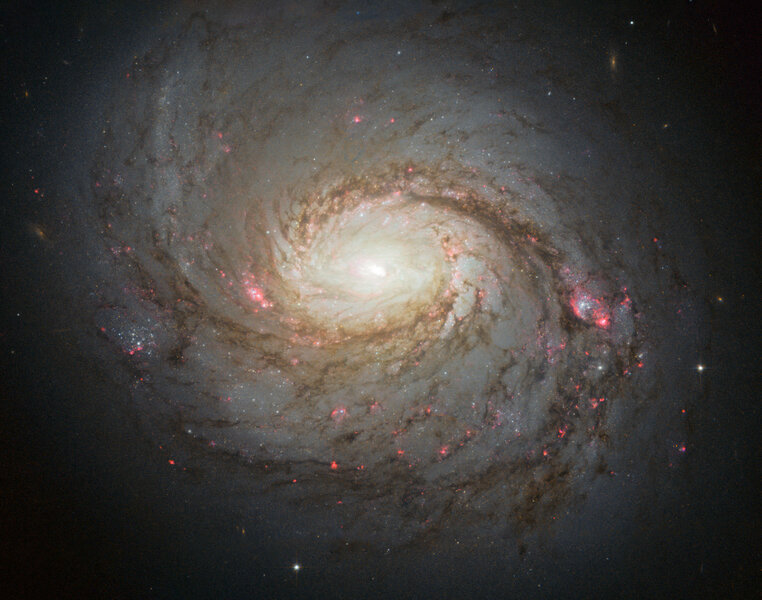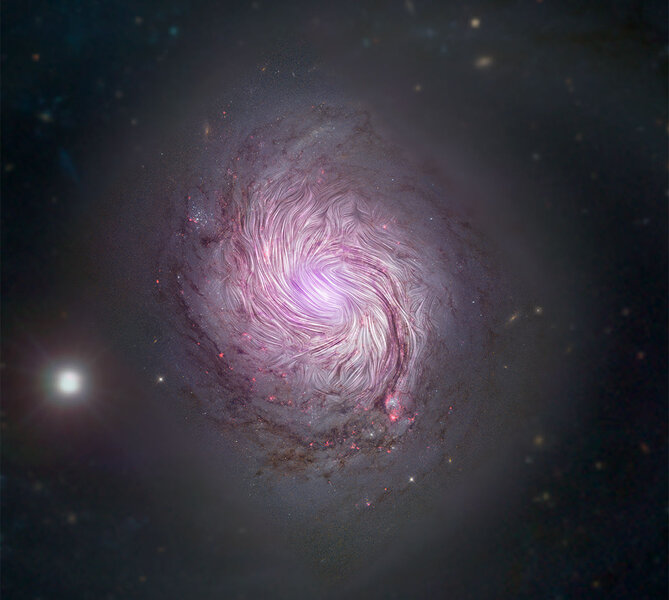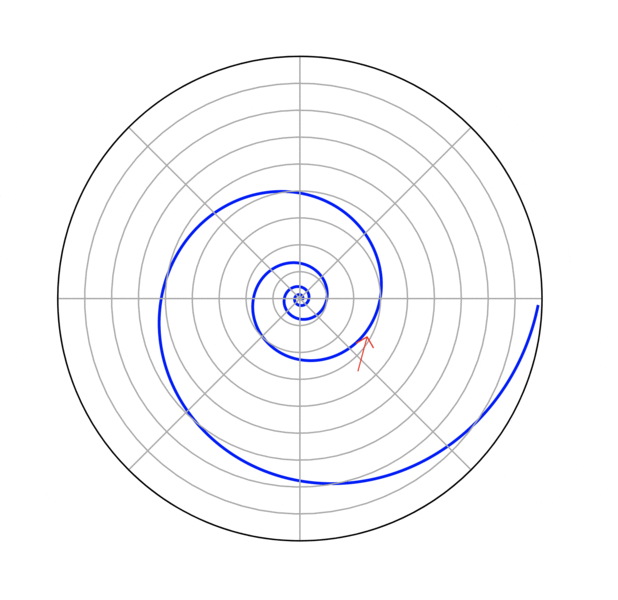Create a free profile to get unlimited access to exclusive videos, sweepstakes, and more!
Are galactic spiral arms traffic jams or do they wind up? The evidence is… polarizing.

Why do spiral galaxies have spiral arms?
This is a question that I figured had been solved decades ago. I wrote about this in a post about spiral arms from July 2019:
You might think spiral arms form because, due to gravity, stars close in to the center of the galaxy orbit faster than stars farther out, so a spiral pattern naturally appears. But there's a problem with this: Over time, this would wind up the arms, destroying the structure. The thinking was that we see so many galaxies with arms that this can't be the way things work.
astronomers came up with an idea called the density wave hypothesis. Spiral arms, according to this, are more like traffic jams of stars and gas in a galaxy. A traffic jam on a road can persist for a long time, even though individual cars move in and out of them. Spiral arms were thought to be the cosmic equivalent, where spiral density waves form due to the complicated physics of the gravity of a galactic disk. Stars move in and out of them, but the wave itself persists. This way, arms don't wind up over time.
While the density wave hypothesis explains a lot of spiral arm structure, recently results have come in that show that it is actually possible that the arms in galaxies really are winding up, eventually getting so tight they fall apart, only to start to reform once again, with the whole process repeating. I explain all that in the July 2019 post, so please give that a read.
So we have two competing ides on how spiral arms form. Which is right?
A new set of observations seem to support the density wave hypothesis: Astronomers looked at magnetic fields in the galaxy NGC 1068, a nearby spiral at a distance of about 44 million light years. The astronomers used SOFIA (the Stratospheric Observatory for Infrared Astronomy), which is quite literally a 2.5-meter telescope sticking out of the side of a 747! Some wavelengths of infrared light are absorbed by water vapor in the atmosphere, making them impossible to see from the ground, but SOFIA flies high enough to get above the vast majority of that gas, allowing it to see the skies at those wavelengths.
To map the magnetic fields in NGC 1068, they exploited an effect of those fields on the dust in the galaxy. This has a few steps to it, so hang tight.
Dust is made up of tiny grains of rocky material (silicates) and long chains of carbon molecules (basically, soot). In the presence of a magnetic field, these grains tend to align their long axes along the magnetic field lines — this is the same thing that happens when you put iron filings on a piece of paper with a bar magnet underneath; the filings align themselves with their long axes along the field lines.
When you have great clouds of dust light years across like this where the dust is all aligned, another effect comes into play: polarization. Light from stars hits the dust grains and, because the grains are aligned, the light waves that bounce off get aligned as well. This happens in everyday life; when you’re outside on a sunny day, light reflecting off glass or the hoods of cars is polarized, and if you wear polarized glasses they specifically filter that out, reducing glare from reflections.
Astronomers want to actually see and measure that polarization, though, so they use special cameras sensitive to it. Warm dust in galaxies tends to glow at very long wavelengths, which is why these new observations used SOFIA; it has a camera on it called HAWC (High-resolution Airborne Wideband Camera/Polarimeter) that measures the polarization of the light from the dust. The way the magnetic fields align in the galaxy affects the way the light is polarized, so they were able to map the direction of the magnetic fields in the arms of the galaxy! And when they did, they got this:
That image is a combination of different observatory images of NGC 1068 and the magnetic field streamlines added on top (streamlines are magnetic field lines in a fluid that moves, changing the shape of the lines). What it shows is that the magnetic field lines follow the shape of the spiral arms, including specific tracers of spiral structure like gas clouds and stars that also follow the pattern. They also found the field lines follow a symmetric opening or pitch angle, the angle between the spiral arm at any one point and a circle of the same size.
That’s important because that’s a natural outcome of the density wave hypothesis! As the wave moves through the galaxy’s disk, the opening angle should stay constant, and the magnetic fields should align with it. So this result supports the density wave idea.
It’s not clear if the winding-up hypothesis would predict this or not. That idea is relatively new, and I didn’t see any papers on it making a prediction for magnetic fields. If this new observation can be explained by spiral arms winding up, it’s up to astronomers to see how that works. To be honest, I don’t really know how much weight to put into the winding-up idea; it’s relatively new and I don’t know how seriously it’s being taken just yet. But it’s observations like this one that can make or break a paradigm, so I’ll keep my eyes open in the journals to see if more is being said. Science, after all, isn’t static; it changes, grows, learns, drops old ideas, and attacks new ones, all in the name of making sure we have the best possible understanding of the Universe.





























